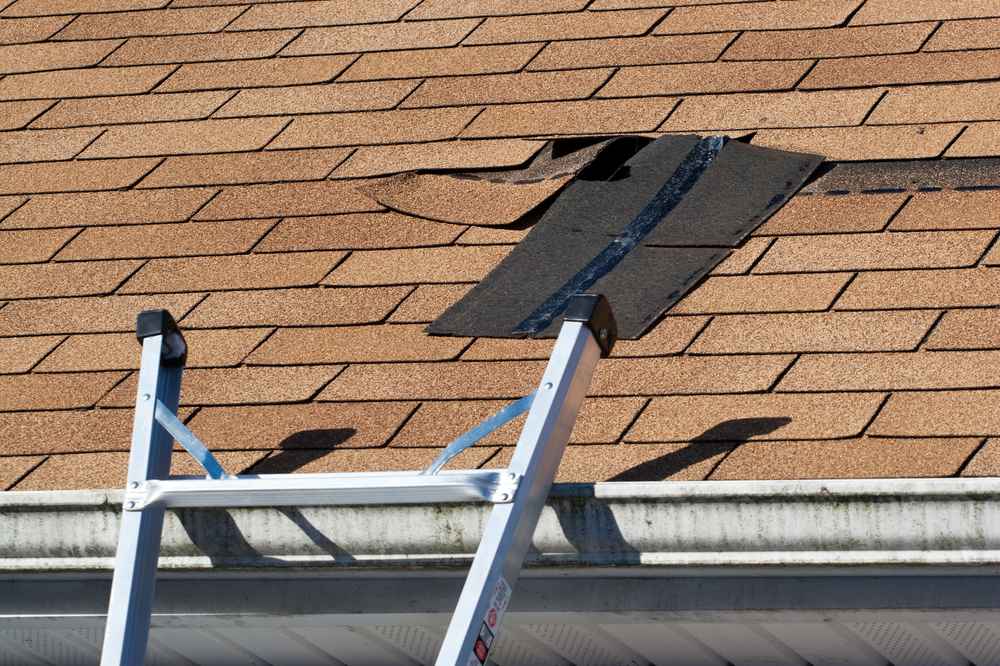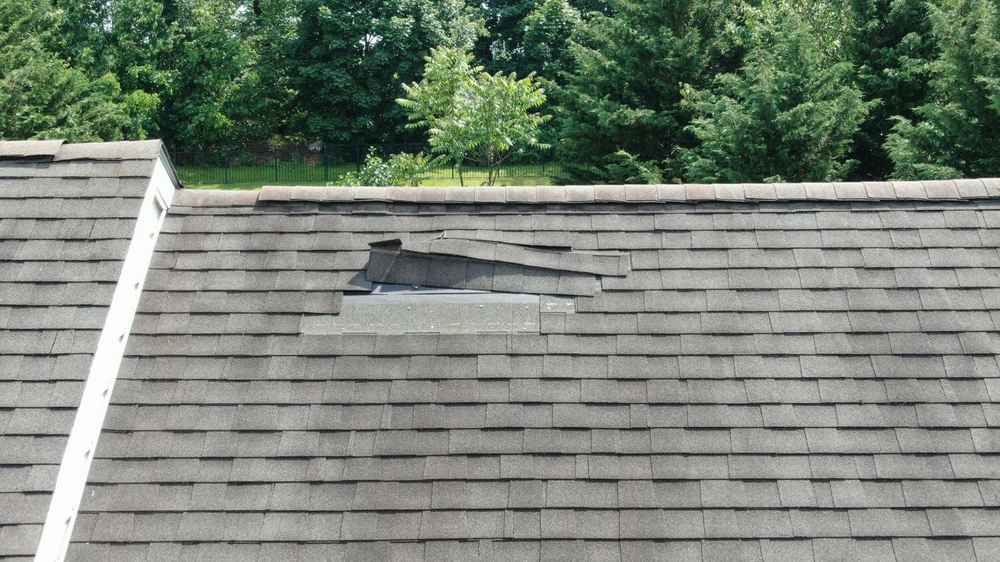7 Signs of a Leaking Roof: How to Tell Your Roof Is Leaking in Phoenix

Phoenix is known for its scorching heat, powerful monsoon storms, and occasional hail—all of which can take a toll on your roof. Even a minor leak can lead to costly damage if left unchecked, potentially affecting your home’s structure, insulation, and even air quality. Do you know the signs of a roof leak? Identifying them early can save you time, money, and stress. Let’s dive into how to tell your roof is leaking and what steps you should take.

1. Water Stains on Ceilings and Walls
One of the most obvious signs of a roof leak is water stains on your ceiling or walls. These stains typically appear as yellow or brown spots that grow over time, especially after rain. They often show up near vents, light fixtures, or corners of rooms where water can accumulate.
Water stains indicate that moisture is making its way through your roof and into your home. Even if the stain seems small, the underlying problem could be much larger. It’s important to have a professional inspect your roof as soon as possible to prevent further damage.
2. Dripping Water or Active Leaks
If you see water dripping from your ceiling or running down your walls, it’s a clear sign of a significant roofing problem. This often happens after heavy rainfall, particularly in areas where the roof meets walls, chimneys, or vents.
When you notice an active leak:
- Place a bucket or towel under the drip to prevent water from soaking into your floors.
- Move furniture and valuables away from the affected area.
- Contact a roofing professional immediately to assess the issue before the damage worsens.
Even if the dripping stops once the rain passes, the leak is still there and can cause long-term structural issues if not addressed.
3. Missing, Cracked, or Curling Shingles
Your roof’s shingles serve as a protective barrier against the elements. When shingles start to crack, curl at the edges, or go missing altogether, your roof becomes vulnerable to water infiltration. Phoenix’s extreme heat and powerful winds can accelerate shingle deterioration, making regular inspections crucial.
If you notice any of these issues, your roof could be at risk:
- Shingles that are visibly curling or buckling.
- Cracked or broken shingles.
- Sections of your roof with missing shingles.
A few damaged shingles might be repairable, but widespread damage could mean your roof is nearing the end of its lifespan and needs replacement.
4. Mold or Mildew Growth
Excess moisture in your home can lead to mold and mildew, often appearing in the attic, on ceilings, or along walls. This is not only a sign of a roof leak but also a potential health hazard. Mold thrives in damp, dark areas, making roof leaks a perfect source for its growth.
Common areas to check for mold include:
- Attic insulation and wooden beams.
- Ceiling corners, especially in upper rooms.
- Around vents, skylights, and chimneys.
If you notice a musty odor or see dark spots on walls or ceilings, it’s essential to address both the mold issue and the underlying roof leak before it spreads further.
5. Higher Energy Bills
An unexpected rise in your energy bill could be a subtle sign of a roof leak. When water seeps into your attic or insulation, it reduces your home’s ability to maintain a stable temperature. This forces your HVAC system to work harder, leading to increased energy costs.
If your home suddenly feels drafty or struggles to stay cool in the summer and warm in the winter, a roof inspection can determine whether a leak is affecting your insulation. Catching this problem early can save you money on both energy costs and potential roof repairs.
6. Sagging Roof Deck
A sagging roof deck is a serious warning sign that should never be ignored. When moisture seeps into the wooden structure beneath your shingles, it weakens the roof’s integrity, causing it to sag or dip. This is often a result of long-term, untreated leaks.
If you look at your roof from the street and notice uneven areas or dips, or if your ceiling appears to be sagging inside your home, it’s time for an immediate professional assessment. Left unaddressed, a sagging roof can lead to major structural damage and even collapse in severe cases.
7. Granules in Your Gutters
If you have an asphalt shingle roof, checking your gutters can reveal important signs of a roof leak. Shingles are coated with protective granules that help shield them from the sun’s harsh rays. Over time, these granules can wear away, especially in older roofs.
If you find a large amount of granules in your gutters or downspouts, it’s a sign that your shingles are deteriorating. This can leave your roof vulnerable to leaks, making a professional inspection crucial. While some granule loss is normal, excessive shedding could mean your roof is nearing the end of its lifespan.

How TSM Roofing Can Help
Addressing roof leaks early is key to avoiding costly damage. At TSM Roofing, we specialize in thorough roof inspections, high-quality repairs, and full replacements to keep your home protected year-round. Our team is trained to spot even the smallest signs of a roof leak, ensuring that minor issues don’t turn into major problems.
We work with top-rated materials from trusted manufacturers like Owens Corning and offer industry-leading warranties for peace of mind. Whether you need a minor repair or a full roof replacement, we provide transparent communication, expert craftsmanship, and reliable solutions tailored to your home’s needs.
Don’t Wait—Schedule a Roof Inspection Today
If you suspect a leak but aren’t sure how to tell if your roof is leaking, scheduling an inspection is the best way to find out. Even small leaks can lead to mold growth, structural issues, and expensive repairs. Contact TSM Roofing today to schedule a professional roof inspection and get the expert help you need to protect your home.